OPINION: What should net zero homes look like?
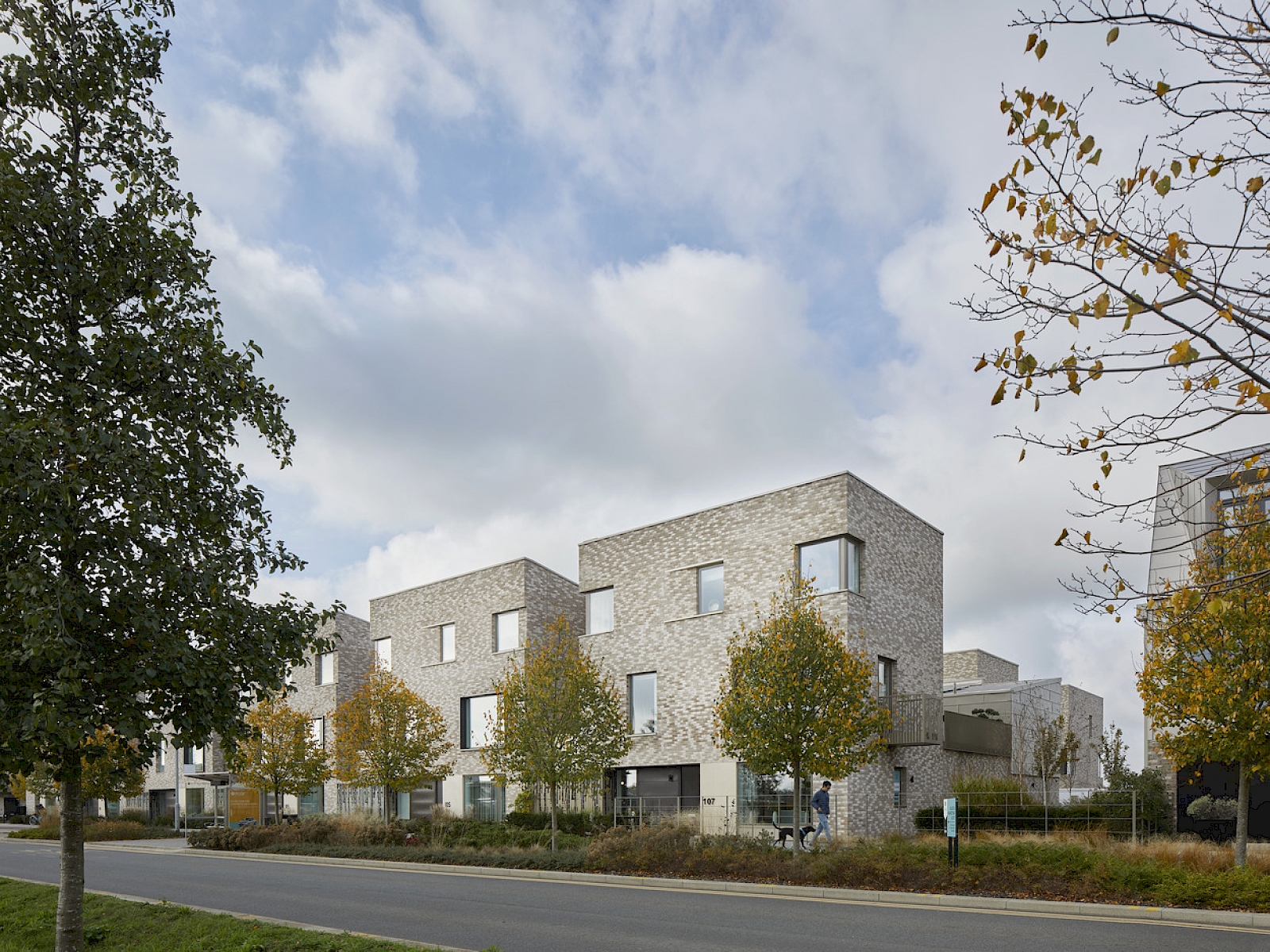
Authour: Tom Dollard, Head of Sustainable Design
Building for 2050: zero-carbon, the homes we live in and the future of architectural style
My work over the last four years has involved carrying out design and construction reviews of low carbon housing case studies for the Building for 2050 project. Our team has analysed the performance of these new homes and are now providing recommendations to Government on how to accelerate the uptake of low cost, low carbon homes. This final report and film will be launched at Futurebuild in 2022, and on the Building for 2050 website.
While our research focussed on the performance of these homes, as an architect, I was also interested in what they looked like. I noticed a range of aesthetic responses in the case studies, which lead me to ask, ‘what should net zero-carbon homes look like?’ This was not one of our research questions, but as Michael Gove highlighted in the press last week (The Times and The Architects' Journal), it is clearly a significant issue that divides public opinion.
So, what do actual net zero homes look like today? Initially there was a desire to show that sustainable homes could look “normal” with the addition of some key elements. The Autonomous House (1975) described an off-grid architecture that worked around the sun, using “free energy” with a conservatory and renewable energy on site. This has evolved into a number of stylistic approaches, exemplified by the ‘eco-bling’ of BedZed (2002) and more recent projects such as Active Homes in Neath (2019), and Etopia Homes in Corby (2020).
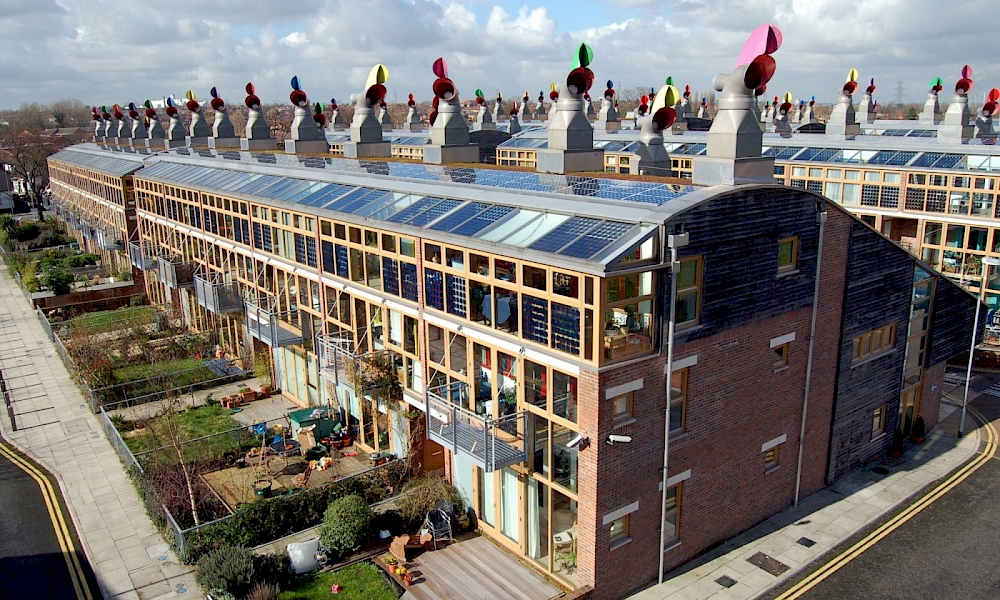
Image source: www.bioregional.com © Tom Chance

Image source: www.etopiacorby.co.uk
These buildings use a self-conscious high-technology and solar-orientated approach that celebrates zero-carbon ambitions. This hi-tech architecture has an extroverted style, sometimes showcasing its zero-carbon credentials at the expense of good design. In the case of BedZed, the homes turn away from the street to face south, lack privacy and are high maintenance. Likewise, at Etopia Corby, the homes are impressive as net producers of electricity, enabled by innovative building services, but the style is dominated by its energy strategy with huge plant rooms and PV panels. Furthermore, it still has significant embodied emissions that will only be offset over 25 years.
These homes demonstrate the problem with both the Government’s proposed Future Homes Standard (2025) and a net zero-carbon standard that allows significant up front carbon emissions to be offset over 60 years. This is clearly too late for the Climate Emergency. I would also argue it is creating a problematic aesthetic for our future homes. To date, I think most zero-carbon projects have delivered zero-carbon in a direct, overly complex, uninspiring manner. In my view net zero homes should be aesthetically beautiful, comfortable in their surroundings, and more subtle in their approach. But are there any projects that have achieved this to date?
There are certainly some improvements being made, evidenced by the recently completed net zero case studies published by the UKGBC and the Good Homes Alliance. Among these case studies is Pollard Thomas Edwards' and Alison Brooks Architects' Knights Park (Phase 1 2020), which I worked on at design stage. It has an aesthetic that responds to place, taking its cue from our work in Distinctively Local, with local brick and a pared back, understated stylistic response to zero-carbon. We assessed energy performance with daylight and overheating, and considered views, routes and privacy alongside usability, biodiversity, circulation and massing. Flat roofs are employed to maximise yet hide large areas of solar PV. Internal layouts allow for MVHR ventilation and zero-carbon services, but these are hidden from view, not celebrated. We chose brick for the solid, robust finish it provides, at the expense of its embodied carbon. The embodied carbon in the bricks and concrete means it still produced significant short term carbon emissions that have contributed to climate change.
So how can we do better? The unapologetic regenerative aesthetic of the Brighton Waste House – it acts as a waste sink – is a potential model.
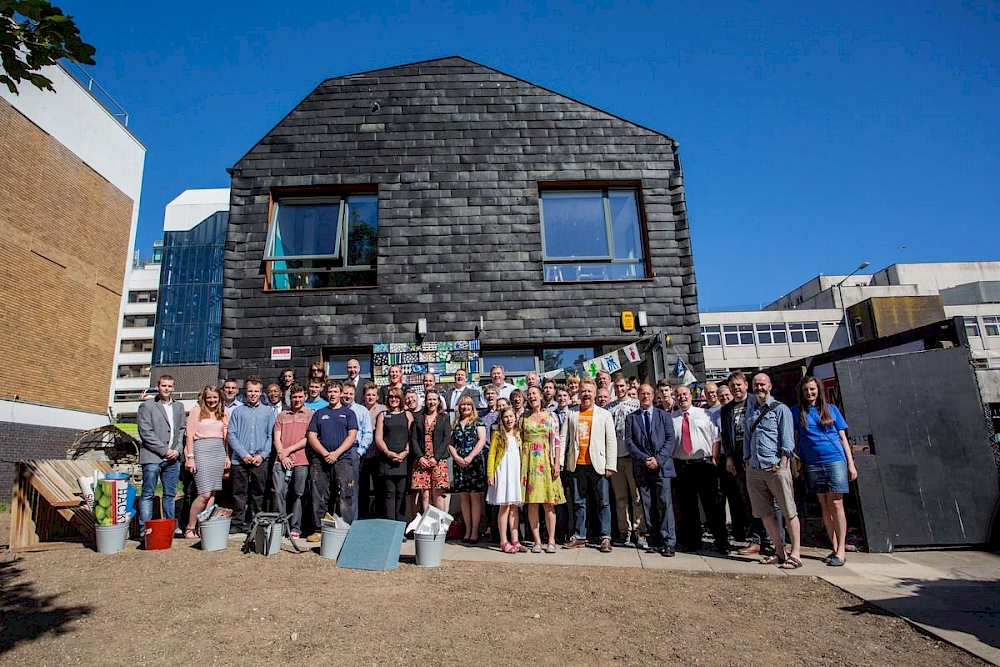
Image source: Brighton Waste House by BBM
I liked it so much that I built a smaller version for myself. My reclaimed garden office has an overriding homely feeling with an aesthetic of distressed materials and celebrated structure - complemented by simple, tactile details. I’d like to see more use of local re-used materials in new projects, to help create a regenerative design style in keeping with place and context.
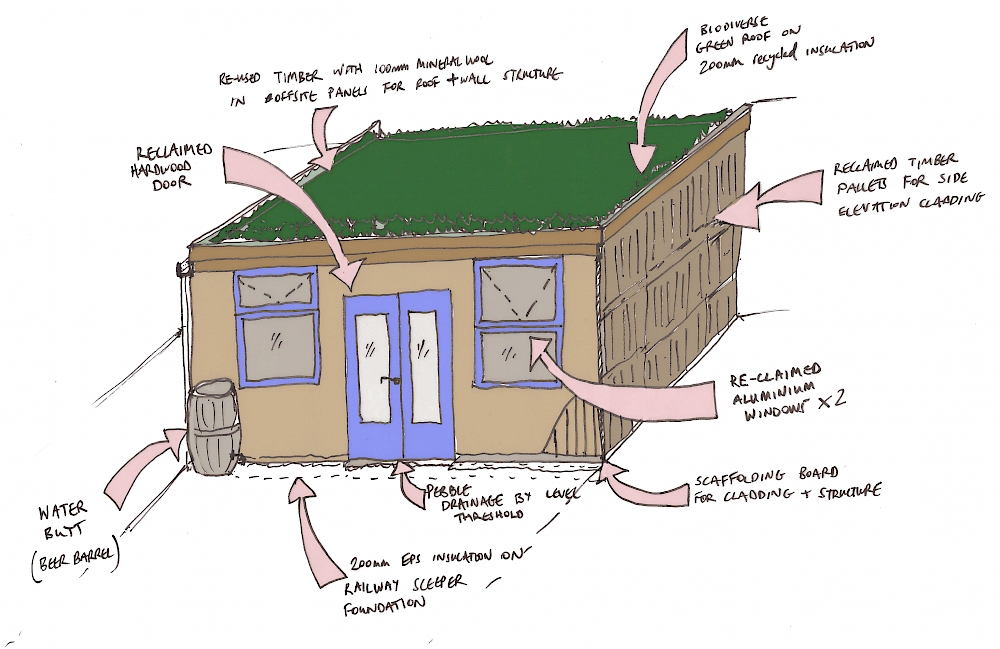
There are three things we can all do to make an industry-wide approach. Firstly, we need to scale up specification and use of low carbon materials; timber frame, engineered timber, straw-bale panels, offsite waste panels, structural stone and stone cladding, clay, lime plasters all have significant potential. Secondly, we need smarter resource maps and city-wide databases of re-usable materials to be used on new projects. And thirdly, we need to end the fuzzy thinking informing environmental assessments that conflate bike storage with reduction of carbon emissions. We need to be clear that the key aim is to remove fossil fuels and all greenhouse gas emissions from our proposals.
Does this mean stopping all newbuilds? This would be a logical – if radical - response to the climate emergency, similar to the UK government’s “stay at home” lockdown response to the Covid pandemic. Effective - but not without consequences. A more achievable strategy would be to prioritise smarter refurbishment, like Lacaton and Vassal’s reworked ‘60s-built Paris high-rise, rather than just adding more insulation leading to unintended consequences, like Grenfell Tower, and only allow newbuilds where no fossil fuels have been involved. Whatever architectural style we favour, it should challenge the Modernist-inspired - wasteful – design approach which sees sustainability as a bolt on. Super-local, fossil fuel free, climate responsive design is the way forward.
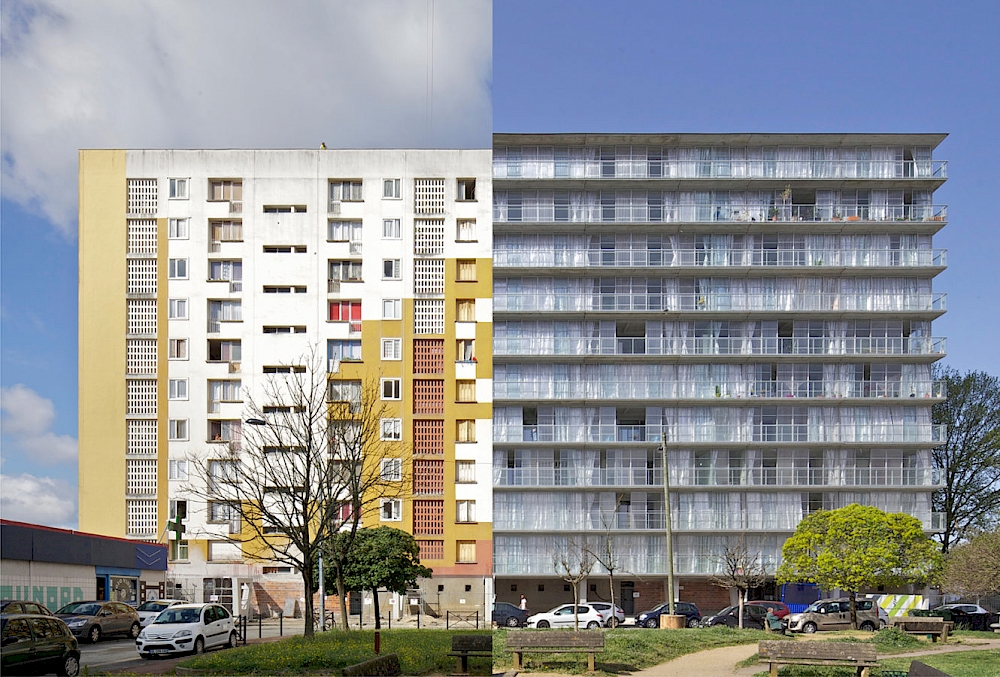
Image source: Lacaton and Vassal © Philippe Ruault






